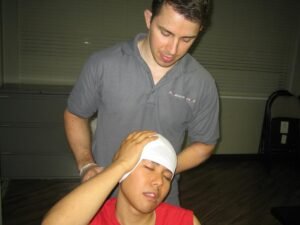If an individual sustains a head lump, the initial hour is vital to determine whether the lump is a serious one. Whether you are treating a lump on a head of a child or family member, it is essential to act quickly yet calmly so that the right course of action can be taken. Even though a lump on the head does not require medical care, some cases can be dangerous and require immediate care. With this in mind, it is important that you are familiar with the warning signs if an individual sustained a head lump.
Allow the individual to lie down
If you suspect that the individual has a head lump, you have to assist him/her to lie down immediately. You have to position the individual on his/her back with the head completely straight and slightly elevated. If the lights are turned on in the room, turn them off and try to calm the individual.
Stop the bleeding of a head lump

In case the lump on the head involves bleeding, the first aid measure is to manage the bleeding. You have to apply a cloth or gauze on the wound and press in a firm manner until the bleeding eventually stops. In case the blood soaks the first layer, do not remove but simply apply new gauze over the first one.
Observe for the danger signs
You should always watch out for any of the danger signs. Always remember that a head lump can be dangerous once intracranial hematoma or bleeding inside or around the brain occurs. In case the individual has a headache that remains the same or worsens after an hour, vomits, difficulty maintaining balance, and dizzy, abrupt mood changes or become unconscious, it is important to call for emergency assistance since these indicate serious trauma to the head.
Minimize the swelling on the head
A lump on the head can occur the moment the tissue that surrounds the scalp becomes inflamed. Although a bulge can appear severe, if it is not accompanied by any of the danger signs discussed, it is not likely a severe case. You have to continue to monitor the head lump over the next few days while at the same time applying a cool washcloth for 15 minutes every hour to minimize the swelling.
When to consult a doctor
You have to call a doctor if the individual experiences severe bleeding, confusion, loss of consciousness, headaches or any of the danger signs the next few days. The treatment normally includes prescription drugs such as codeine to help minimize the pain.
Important considerations to bear in mind
It is imperative to ask the individual his/her location and other personal questions. Confusion and memory loss can indicate a severe trauma to the head. In case the trauma to the head is accompanied by bleeding that could not be controlled, bring the individual to the emergency department at the nearest hospital right away.
